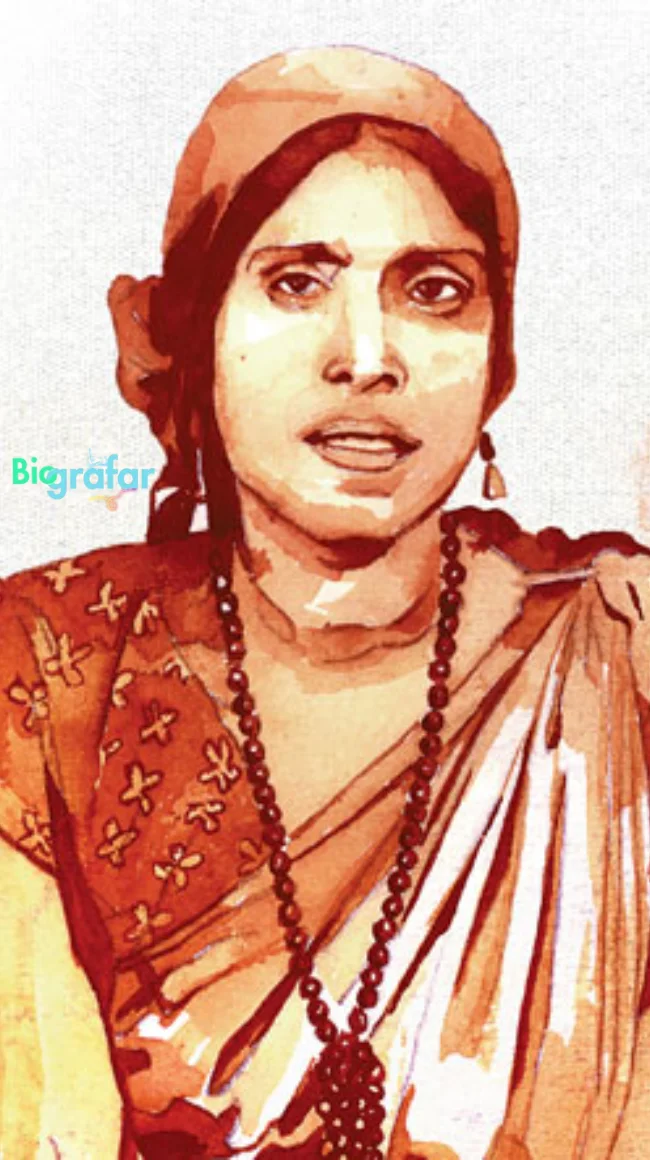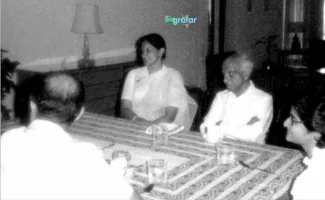Suhasini Chattopadhyay: A Legacy Unveiled
Introduction
Suhasini Chattopadhyay, also recognized as Suhasini Nambia, emerges as a significant figure in Indian history, renowned for her impactful role as a communist leader and dedicated freedom fighter. Her journey is distinguished by being the inaugural female member of the Communist Party of India, highlighting her pioneering spirit and unwavering commitment to political activism. As a trailblazer, she shattered societal barriers, leaving an enduring imprint on the socio-political landscape of the nation. This introduction unveils the captivating narrative of Suhasini Chattopadhyay—a woman whose life story not only showcases her individual resilience but also symbolizes the collective struggle for justice, equality, and the relentless pursuit of a free and united India.
Journey Through Ideals: Suhasini Chattopadhyay's Life in Revolution
Born on November 26, 1902, Suhasini Chattopadhyay emerged from a family deeply rooted in the struggle for India's freedom. As one of eight children to Aghore Nath Chattopadhyay and Barada Sundari Debi, her familial ties extended to her renowned sister, freedom fighter, and Indian National Congress President Sarojini Naidu.At the tender age of 17, Suhasini embarked on the journey of matrimony with the freedom fighter and journalist A. C. N. Nambiar in Madras. However, their union faced tumultuous times, leading to separation fueled by Nambiar's involvement with his secretary, Eva Geissler. The aftermath saw both Suhasini and Nambiar residing in London before she pursued studies at Oxford and later shifted to Berlin.In Berlin, Suhasini, accompanied by her nephew Jayasurya, engaged in employment—Jayasurya edited periodicals, while Suhasini imparted English lessons to Germans. Inspired by her brother Virendranath Chattopadhyay, renowned as Chatto and a prominent communist, Suhasini delved into the realm of communism. Facilitated by her brother's connections, she secured admission to the Eastern University in Moscow, guided by the influential M.N. Roy.Returning to India in 1928 after her Moscow sojourn, Suhasini's commitment to communism persisted. Her husband Nambiar, entrenched in a new relationship, declined her plea to return. Patiently waiting for six years, she eventually married R.M. Jambhekar in 1938, a trade union activist and ISCUS founder whom she had met in Moscow.Suhasini's significant role extended beyond personal narratives. Hosting American journalist Edgar Snow in 1931, she became a pivotal guide. Snow later acclaimed Suhasini as the most beautiful woman he had ever encountered in his article, "The Revolt of India's Women." Suhasini Chattopadhyay's life traversed continents, ideologies, and personal struggles, leaving an indelible mark on India's revolutionary tapestry.


Suhasini Chattopadhyay's Entrance into Social Activism
Suhasini embarked on a groundbreaking journey by becoming the inaugural woman member of the Communist Party of India in 1929. Remarkably, her commitment to the party attracted police scrutiny, a shadow she bore until India gained independence in 1951. Beyond her political role, Suhasini showcased her versatile talents as an adept singer and dancer, swiftly integrating into the cultural endeavors of the party.
Choosing Bombay as her permanent residence marked a pivotal chapter in Suhasini’s life. Here, she carved a distinct identity within the vibrant tapestry of the communist movement. As her presence became synonymous with the party’s cultural activities, Suhasini evolved into a well-known figure, contributing significantly to the ideological landscape. The shift to Bombay not only solidified her commitment to the cause but also positioned her as a key player in fostering the cultural dimension of the communist narrative.
Throughout this period, Suhasini’s resilience and dedication to the communist ideals remained unwavering. Her journey unfolded against the backdrop of a changing India and her role as a cultural and political luminary left an indelible mark on the trajectory of the Communist Party of India.
Suhasini's Courageous Assistance: A Tale of Escape and Solidarity
In the turbulent times of the Meerut Conspiracy Case in 1929, around 32 communist and trade union leaders faced arrest for organizing a railway strike against British rule. Among them, budding communist leader Amir Haider Khan found himself on the list. Suhasini Chattopadhyay, an influential figure in the communist movement, played a pivotal role during this critical juncture.
Amir Haider, having just returned from abroad, sought refuge at Suhasini’s residence along with Rizvi. Recognizing the danger, Suhasini advised him to leave Bombay for the relative safety of Goa, a Portuguese colony at the time. With an Italian passport in hand, Amir Haider made his way to Goa and eventually departed for Naples en route to Germany, escaping the clutches of British authorities. Suhasini’s assistance proved instrumental in this daring escape.
When Amir Haider returned to India in 1931, the safety concerns persisted, prompting his relocation to Madras as per the party’s instructions. Once again, Suhasini played a crucial role, facilitating his journey and arranging financial support. She even organized his stay in Madras. When Amir Haider faced arrest in Madras, Suhasini, along with her sister and Ranadive, was dispatched by the party to organize his defense.
After their release from the Meerut case, Ghate and Mirajkar engaged in discussions with Suhasini and Haider regarding further party activities. Meanwhile, the party decided to extend its efforts within the Congress for India’s independence. Suhasini’s unwavering support, both in times of escape and legal challenges, underscored her commitment to the cause and cemented her role as a key figure in the communist movement’s intricate history
Pinnacle Positions: Suhasini's Leadership Journey
Suhasini made significant contributions to the cultural and political landscape, becoming a key figure in the Communist Party of India (CPI). Joining the party in 1929 as its inaugural female member, her involvement drew attention, leading to police surveillance until India's independence in 1951. A talented singer and dancer, she immersed herself in the party's cultural activities and permanently relocated to Bombay, gaining prominence in the communist movement.Her influence extended to the arts, co-founding the Little Ballet Group and actively participating in the Indian People's Theatre Association (IPTA). Under her leadership, they staged successful plays, showcasing her multifaceted talents. Suhasini also took on the responsibility of publishing "The New Spark" for the Communist Party, contributing to its ideological dissemination.During World War II in 1941, Suhasini, alongside leaders like Bhupendra Nath Dutta, Hiren Mukherjee, and S.K. Acharya, played a pivotal role in establishing the Friends of Soviet Union (FSU). This initiative, launched on the day of Nazi German aggression on the USSR, aimed to garner support for the Soviet cause. Following her release from Nasik prison in 1942, Ramakrishna Jambhekar joined Suhasini in FSU activities.In 1944, the first All India conference of the FSU took place in Bombay, with Sarojini Naidu elected as chairperson and Jambhekar as general secretary. Suhasini's active involvement in organizing the conference showcased her leadership skills. Additionally, she played a significant role in the South Asian Relations Conference in New Delhi in March 1947, initiated by Nehru. Suhasini's close association with prominent political figures and her dedication to Marxist principles marked her as a key influencer in India's political and cultural spheres.
A Revolutionary Force in History: Suhasini's Enduring Legacy
Suhasini's role as the first woman member of the Communist Party of India marked a groundbreaking moment, challenging societal norms and paving the way for future generations of women in politics. Her involvement in cultural activities within the party showcased her multifaceted talents, with her fine singing and dancing skills becoming integral aspects of the communist cultural milieu.The establishment of The New Spark publication and her pivotal role in initiating the Friends of Soviet Union (FSU) exemplify Suhasini's commitment to spreading communist ideals and fostering international solidarity. Her strategic involvement in significant conferences, including the South Asian Relations Conference, demonstrated her influence on diplomatic endeavors during crucial junctures.The enduring impact of Suhasini's leadership is particularly evident in her assistance to fellow communists, such as Amir Haider Khan, during challenging times like the Meerut Conspiracy Case. Her courage in helping him escape and providing unwavering support showcased her dedication to the cause.Today, Suhasini Chattopadhyay's legacy resonates as a beacon of resilience, activism, and progressive ideologies. Her life's work continues to inspire contemporary movements, serving as a testament to the enduring power of individuals who dare to challenge oppressive systems for the greater good.
Suhasini Chattopadhyay: A Quiet Force Beyond Politics
In the late 1950s, Suhasini Chattopadhyay’s political journey took a nuanced turn as she traversed through the evolving landscape of Indian politics. While briefly aligning herself with the Congress party, the emerging political ethos of the 1960s proved incompatible with her ideals, prompting a gradual withdrawal from active politics. Unwilling to compromise her principles, Suhasini embarked on a new chapter, distancing herself from the changing political dynamics.
Despite her departure from mainstream politics, Suhasini remained dedicated to the service of society. The inception of her NGO, the New Work Centre for Women, attested to her unwavering commitment to social causes. Through this organization, she continued to impact lives, particularly focusing on women’s welfare, echoing her long standing dedication to societal betterment.
As the late 1960s unfolded, Suhasini’s health began to decline, necessitating the use of a wheelchair. Undeterred by physical limitations, she persisted in her social endeavors, embodying resilience in the face of adversity. In 1973, Suhasini Chattopadhyay departed from this world, her contributions extending beyond the political realm. Despite her unsung departure, her legacy endured through the lives she touched and the principles she upheld, leaving an indelible mark on the narrative of India’s socio-political evolution.
A Beacon for Generations: Suhasini’s Enduring Impact
Suhasini Chattopadhyay’s influence transcends her temporal existence.as a trailblazer in the male-dominated arena of Indian politics, Suhasini’s journey serves as a guiding light for aspiring leaders, particularly women, encouraging them to challenge norms and strive for societal betterment. Her foray into the Communist Party of India in 1929, despite societal constraints, reflects a boldness that continues to resonate with individuals navigating similar challenges today.
Beyond her political endeavors, Suhasini’s contribution to cultural activities and her involvement in the establishment of the Little Ballet Group and Friends of Soviet Union showcase the multifaceted nature of her impact. Her advocacy for interfaith harmony and her efforts to break down societal barriers exemplify a vision that extends beyond her time, fostering inclusivity and unity.
In the wake of Suhasini’s departure from mainstream politics in the late 1950s, her pivot towards social work, notably through the New Work Centre for Women, underscores a commitment to creating tangible change at the grassroots level. Her resilience in the face of physical challenges and her quiet dedication till the end become poignant lessons for generations on the enduring power of commitment and service.
In essence, Suhasini Chattopadhyay’s life becomes a timeless narrative, a beacon guiding future generations towards a more compassionate, just, and inclusive society. Her legacy, intricately interwoven with the fabric of India’s history, remains an eternal source of inspiration, inviting individuals to reflect on their roles in shaping a better tomorrow.
Conclusion:
In conclusion, in our exploration of Suhasini Chattopadhyay’s remarkable journey we are confronted with the profound and enduring impact of her contributions to Indian society. Through decades of political activism, social work and unwavering dedication Suhasini not only challenged societal norms but also left an indelible mark on the nation’s fabric. Her life is characterized by resilience and commitment, standing as the enduring power of individual agency in shaping a more just and inclusive society. As we reflect on her legacy, Suhasini Chattopadhyay becomes not just a historical figure but a timeless inspiration urging us to question, engage and contribute to the continual evolution of our societal tapestry. Her story resonates as a beacon, guiding us towards a future where the seeds of positive change are sown through advocacy, compassion and a steadfast commitment to the betterment of all.